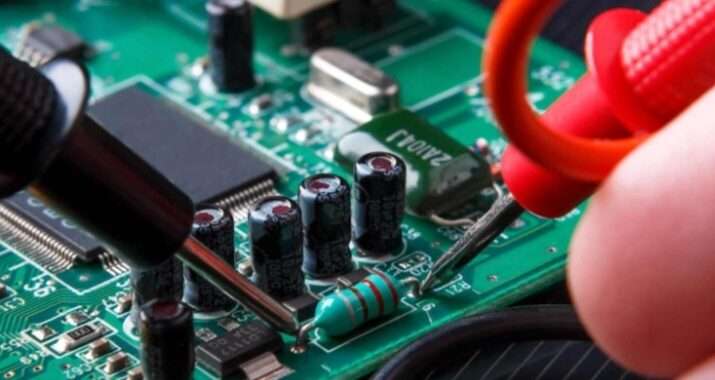Author: Atteeq ur rahman
Short circuits in Printed Circuit Boards (PCBs) can be a bit tricky to handle, causing issues like overheating or device failure. In this guide, we’ll explore step-by-step methods and tools to help high school students efficiently find and fix PCB short circuit. Let’s dive into this exciting world of electronics repair!
Identifying the Short Circuit:
Start by closely looking at the PCB for any burns, black spots, or strange things. You might need a magnifying glass or a microscope for a closer view.
Infrared Imaging:
For a more advanced method, consider using an infrared camera. It can help identify areas with abnormal heat levels, revealing hidden issues not visible through a regular inspection.
Testing with Multimeter:
A multimeter is like a superhero tool. Set it to continuity mode and carefully check different points on the PCB. If it beeps, there’s something interesting there!
Short Circuit Testing:
Use the multimeter to measure resistance between different points on the PCB. If the resistance drops suddenly between two points that shouldn’t be connected, it could be a short circuit.
Additional Techniques:
Sometimes, solder (the stuff that holds components in place) can create bridges between two points. Using a soldering tool and a desoldering pump, you can fix these bridges.
Tracing the Circuit:
Follow the traces on the PCB, like following a map. This method can help you find where the short circuit is hiding.
Destructive Testing (As a Last Resort):
If things get really tough, you might need to remove parts or cut out sections of the PCB. Only do this when everything else fails.
Tools for Short Circuit Detection:
An advanced tool that can spot short circuits by finding areas with extra heat.
In-Circuit Tester:
A special tool that checks electrical stuff without taking things apart, helping find short circuits quickly.
X-ray Machine:
This cool machine lets you see through the PCB, helping to find short circuits hidden beneath components or traces.
Preventing and Resolving Short Circuits:
Follow good design practices by keeping things apart and ensuring a steady power supply.
PCB Maintenance:
Clean the PCB regularly to avoid issues caused by dust. Use the right tools and products to avoid damaging delicate components.
Testing and Troubleshooting:
Use a multimeter for testing. Follow a step-by-step process, starting with checking the power supply, to quickly find short circuits.
Frequently Asked Questions (FAQs):
- What is a short circuit?
- A short circuit occurs when two or more components on a PCB unintentionally connect, causing unexpected issues.
- Why do short circuits happen?
- Short circuits can result from design mistakes, manufacturing errors, mishandling, or wear and tear over time.
- How do I use a multimeter?
- Set the multimeter to continuity mode, place its probes on suspected areas, and listen for beeps that indicate a short circuit.
- What is an infrared camera used for?
- An infrared camera detects heat, helping to identify areas on the PCB that might be experiencing a short circuit.
- Can solder cause short circuits?
- Yes, excess solder between pads or pins can create solder bridges, leading to short circuits.
- How do I follow traces on a PCB?
- Tracing involves visually following the circuit’s path from the power source to components to identify any unusual connections.
- Is destructive testing safe?
- Destructive testing should only be a last resort and must be performed with caution.
- Can a thermal imaging camera scan through a PCB?
- No, but it can identify areas on the surface that generate excess heat, indicating a potential short circuit.
- Are in-circuit testers easy to use?
- Yes, in-circuit testers are user-friendly tools designed to quickly identify short circuits without disassembling components.
- How often should I clean my PCB?
- Regular cleaning is essential, especially when dust accumulation is visible. The frequency depends on the environment.
- What safety precautions should I follow?
- Always prioritize safety. Ensure the power is off, and seek professional assistance if you’re unsure about any repair procedure.
- Can short circuits cause fires?
- In extreme cases, short circuits can lead to overheating, posing a risk of fire. Identifying and fixing them promptly is crucial.
- Do all short circuits result in device failure?
- Not necessarily. Some short circuits might cause minor issues, while others can lead to complete device failure.
- Can a multimeter detect internal shorts?
- Yes, a multimeter can help identify internal shorts by measuring resistance between different points on the PCB.
- Are X-ray machines necessary for every repair?
- No, X-ray machines are advanced tools typically available in specialized settings. They are not required for routine PCB repair.



